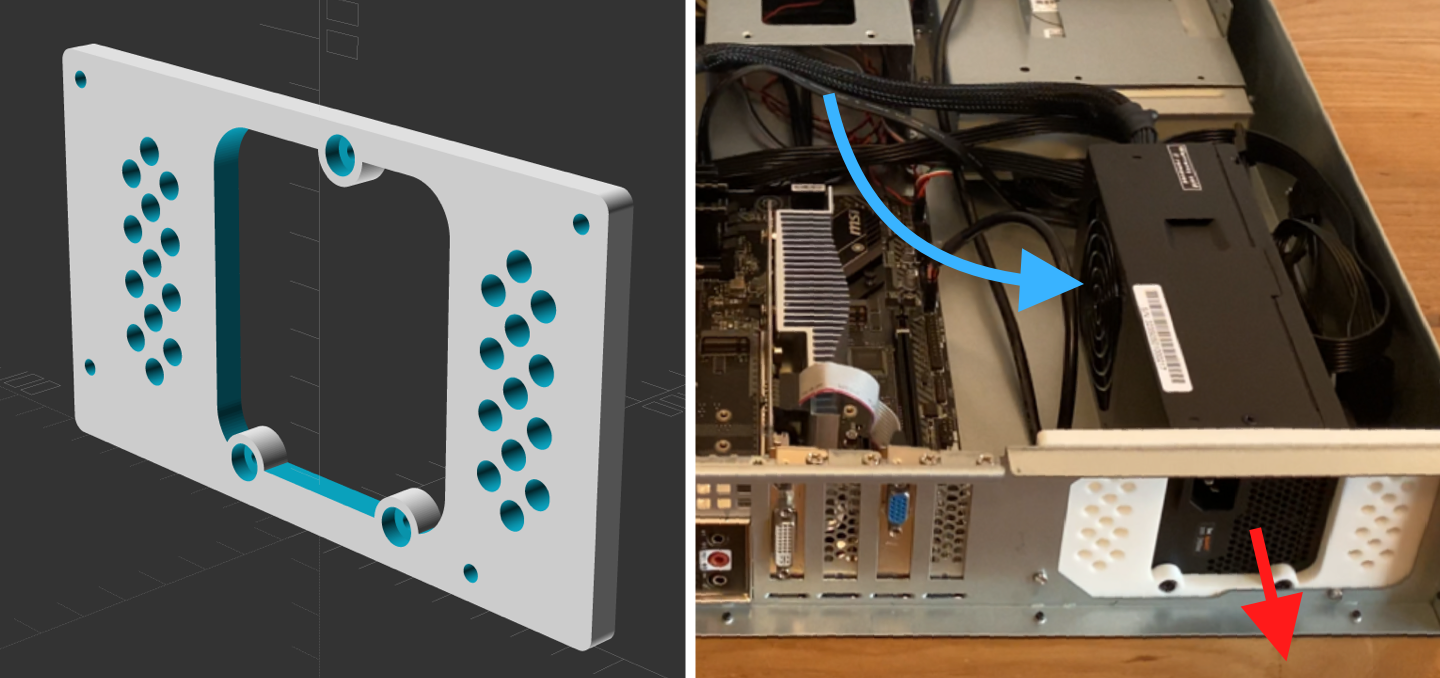2021-12-28
Unraid Home Server Build in Late 2021
2022-02-17: Added update on P4 connector usage.
For a long time I wanted to build a new home server that I will mainly use as a file server and backup target, as well as for some light-weight docker containers. I decided to build a quiet rack mounted server, even though this is not what rack mounted systems are intended be.
This article will not repeat all of the information given in the video, but rather try to give some additional insights into the build process and discuss the software that I run on the server.

Below you will first find the banner which is a link to the YouTube video. Beneath that, there are some additional information on the hardware that was used and some software preferences. Apart from a problem related to CPU sleep modes that is discussed below, the experience of building a server with Unraid has been pretty good. The setup is easy and it seems to be a good option for pro users that still don’t want to spend a ton of time on setting the server up.
1 Video
Below is a link to a video showing the assembly process of the server where all of the used components are discussed.
2 Components
Most of the used components are described in the video but I will go into a bit more detail for selected parts here.
2.1 PSU Adapter: TFX to ATX
The Inter-Tech 2U-2098-SK server chassis has mounting positions for 2U server PSUs (power supply units) and ATX PSUs. Server PSUs tend to be rather noisy and ATX PSUs mostly have their air intakes on top, which would block them when the server’s cover is in place. This is why I wanted to go with a smaller sized PSU for a desktop PC, which combines the benefits of low noise operation and small form factor.
I chose the bequiet! TFX Power 3 300W Gold. As the name suggests, it comes in a TFX form factor, which is as wide as an ATX PSU is high, meaning the TFX Power 3 can be mounted perfectly into the server chassis when rotated sideways by 90°. However, there is no mounting holes for a PSU of this size and this is why I modeled and 3D printed an adapter that allows mounting the TFX PSU.

The PSU adapter can not only be used for this server chassis but for any case that has mounting holes for an ATX power supply. The 3D model can be downloaded as an .stl file for 3D printing or you can use the .scad file that has the OpenSCAD source code to adjust the adapter to your needs.
2.2 CPU Power Adapter P4 to P8
The TFX Power 3 by bequiet! has only a four pin CPU power connector, while the mainboard requires an eight pin connector. To still power the CPU, I am using a P4 to P8 adapter. CPU power connectors with more pins were introduced to support more power hungry CPUs, but since I am using an AMD Ryzen 1200 which is rather weak, I am getting away with using this four pin power connector on the power supply. However, when a significantly stronger and thus more power hungry CPU is used, this connector might not be a suitable solution anymore because a stronger CPU might require more power than four pins can deliver.
Update: According to a comment on my YouTube video made by user ClassicGOD it is not necessary to use the splitter. One should be able to just plug the four pin connector into the right side of the eight pin connector.
3 Software
The server is running Lime Tech’s UnRaid OS. I chose it because setting up hard drive encryption and SSD caches is very simple and I did not want to spend a lot of time configuring the server’s OS.
3.1 Disabling CPU Sleep C-States
When the CPU was entering sleep mode, the server would not wake up again and had to be hard rebooted. This is a problem of course, and while I didn’t have time to investigate the cause of this problem or how to fix it, I worked around it by just disabling the higher C-States in the BIOS, therefore preventing the CPU to enter sleep modes.
I read in an Unraid forum that there have been problems with waking up from deeper sleep modes with AMD processors in earlier Unraid versions but that this should actually be fixed. At the time of writing this, the server is running Unraid 6.9.3 and I am still seeing this issue if higher C-States are allowed in the BIOS.

